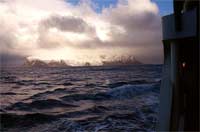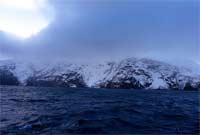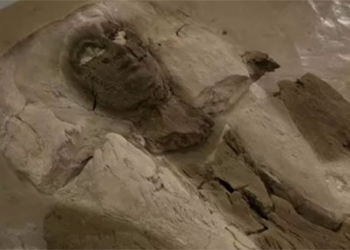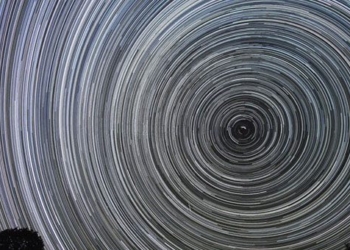 In July 1821, the exploratory ships “Vostok” and “Mirny”, led by Russian explorers Bellingshausen and Lazarev, set out to find the fabled “Southern Continent.” This expedition was the subject of much excitement at the time. Their goal was to reach the polar lands and discover uncharted territory. After five months of navigating the treacherous seas, they arrived at South Georgia Island at 54 degrees 30 minutes south latitude by December. Shortly thereafter, they reached South Sandwich Island (now known as the Sandwich Islands) and continued their journey southward.
In July 1821, the exploratory ships “Vostok” and “Mirny”, led by Russian explorers Bellingshausen and Lazarev, set out to find the fabled “Southern Continent.” This expedition was the subject of much excitement at the time. Their goal was to reach the polar lands and discover uncharted territory. After five months of navigating the treacherous seas, they arrived at South Georgia Island at 54 degrees 30 minutes south latitude by December. Shortly thereafter, they reached South Sandwich Island (now known as the Sandwich Islands) and continued their journey southward.
On their voyage, the explorers battled fierce storms, floating icebergs, and thick fog. The journey was perilous and fraught with challenges.
In January 1823, the Russian expedition successfully entered the Antarctic Circle. Before their eyes unfolded a series of astonishing sights that left them in awe: the color of the sea changed, and flat-topped icebergs emerged, surrounded by steep cliffs.
The immobile ice islands were home to birds circling in the sky. Could these be signs that they were nearing land? Enthusiastically, the team pressed on to a location at 67 degrees 22 minutes south latitude, 2 degrees 15 minutes west longitude, just 22,000 meters from the continent. However, a massive iceberg surfaced, blocking their path, forcing the ships to navigate back against the wind. Unfortunately, they encountered a day of bad weather, with thick clouds and howling winds, and the expedition had to retreat northward to Australia to escape the storm, missing a crucial opportunity.
 In November 1823, as spring approached in the Southern Hemisphere, the two ships set sail once more. By January 1824, they re-entered the Antarctic Circle. On a clear, sunny day, as the fog began to lift, the explorers suddenly spotted a distant dark shape resembling land. Overjoyed, they advanced another 29,000 meters. Indeed, a long island measuring 16,000 meters in length and approximately 7,000 meters wide came into view, located at 68 degrees 19 minutes south latitude, 72 degrees 40 minutes west longitude. This was the first sighting of land within the Antarctic Circle, prompting the team to fire cannons in celebration and name it “Alexander Island.”
In November 1823, as spring approached in the Southern Hemisphere, the two ships set sail once more. By January 1824, they re-entered the Antarctic Circle. On a clear, sunny day, as the fog began to lift, the explorers suddenly spotted a distant dark shape resembling land. Overjoyed, they advanced another 29,000 meters. Indeed, a long island measuring 16,000 meters in length and approximately 7,000 meters wide came into view, located at 68 degrees 19 minutes south latitude, 72 degrees 40 minutes west longitude. This was the first sighting of land within the Antarctic Circle, prompting the team to fire cannons in celebration and name it “Alexander Island.”
On this matter, Americans have a different perspective. They claim that the Antarctic continent was first discovered by Captain Bai Meier of the whaling ship Haro on January 18, 1822. At that time, Bai Meier even boarded the Bielingsaf to give an interview about his discovery of the Antarctic continent. However, the Russians do not acknowledge this claim. They argue that there is no document or evidence to prove that Bai Meier ever gave an interview on the Bielingsaf.
Both sides present compelling evidence to assert their status as the first discoverers of the Antarctic continent. As a result, the question of who truly discovered Antarctica remains a contentious issue to this day.




















































